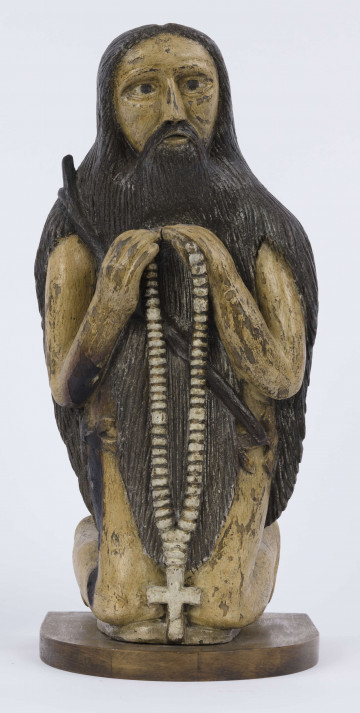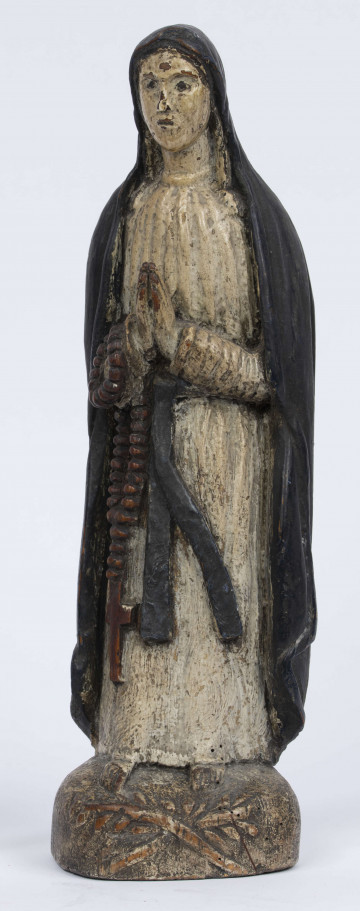
Saint Onufry
1894 — 1930
National Museum in Lublin
Part of the collection: Folk Art of the Lublin Region (17th–1st half of the 20th c.)
The name Anna is one of the most popular names in Poland. It is associated with St. Anne, wife of St. Joachim, mother of Mary and grandmother of Jesus, and a saint of the Catholic and Orthodox Church. On her life the Holy Scriptures are silent, it is in the early Christian apocrypha, including the Protoevangelium of James and the Gospel of Pseudo-Matthew, that some information can be found. Her life attitude and faith, and the spread of veneration for her daughter, influenced the cult of St Anne to emerge around the 4th century. In 550, Emperor Justinian the Great erected a church dedicated to her in Constantinople, and the feast has been celebrated in the East since the 8th century. The oldest known images of the saint date from the same period. In Western Europe, the first monastery was founded in 701, at Floriac near Rouen, and the cult spread widely in the 13th and 14th centuries by knights returning from the Crusades. It originated among the people, who wanted to have a special protector in her. Families and households, brides, spouses, women expecting children, childless women, mothers, grandmothers and widows were entrusted to the protection of Saint Anne. She was also considered the patron saint of sailors, ropemakers, turners, tailors, weavers, millers and bakers. She was invoked in prayers for rain or during storms, to improve the weather, to find lost things. She was and still is venerated as the intercessor of a happy marriage and childhood. In the countryside, St Anne was held in high esteem not only by women asking for offspring and help with childbirth, but older women also prayed to her asking that their grandson become a bishop or at least a parish priest. On her day, 26 July, garlands of herbs were blessed, which had the power to ward off evil.
In Poland the cult of St Anne is very popular. It is evidenced by sanctuaries, such as those on St Anne's Mountain, in St Anne's near Częstochowa, in Smardzewice near Tomaszów Mazowiecki, in Lubartów, in Sobótka near Wrocław. Numerous dioceses, cities, churches, religious congregations and confraternities enjoy her patronage. One of the most flourishing of them operated in the 16th century during the reigns of Anna Jagiellonka and Stefan Batory. Its aim was to oppose the Reformation and to fight drunkenness and other social pathologies, its members had to be of impeccable reputation and education.
Author / creator
Dimensions
cały obiekt: height: 106 cm
Object type
sculpture
Technique
polychromy
Material
wood, paint
Creation time / dating
Creation / finding place
Owner
The National Museum in Lublin
Identification number
Location / status

1894 — 1930
National Museum in Lublin

1894 — 1930
National Museum in Lublin

1790 — 1810
National Museum in Lublin
DISCOVER this TOPIC
National Museum in Lublin
DISCOVER this PATH
Educational path